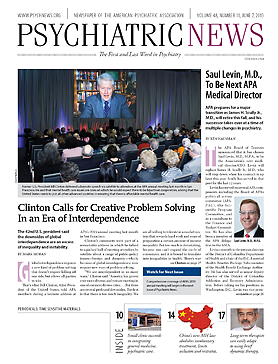Imagine replacing the walls of a house with sheets of glass, allowing an onlooker to examine the wiring and plumbing without ripping the building apart.
Stanford University researchers now have done something like that with the brain.
Psychiatrist Karl Deisseroth, M.D., Ph.D., a professor of psychiatry and chair of bioengineering at Stanford, and colleagues reported on a method to replace the fats that hold brain cells in place with a porous, plastic-like, clear gel.
Ordinarily, brain tissue must be sliced into very thin layers for study, but that can distort the cells and their connections. The new method—called Clear Lipid-exchanged Anatomically Rigid Imaging/immunostaining-compatible Tissue Hydrogel (CLARITY)—retains support for brain cells and their interconnections, down to the molecular level. More importantly, CLARITY permits the scientists to label antibodies and repeatedly stain and destain tissues without disturbing them.
What have they seen so far?
“Using mouse brains, we show intact-tissue imaging of long-range projections, local circuit wiring, cellular relationships, subcellular structures, protein complexes, nucleic acids, and neurotransmitters,” said Deisseroth, Kwanghun Chung, Ph.D., and colleagues in Nature online April 10. The brains are “fully assembled but optically transparent and macromolecule-permeable.”
Advances like this one open new avenues for scientific discovery, said Thomas Insel, M.D., director of the National Institute of Mental Health (NIMH), which helped fund Deisseroth’s research.
“Deisseroth’s great skill lies in developing new technologies to help others to great science,” said Insel in an interview with Psychiatric News.
The technique is new, but the idea goes back decades, said Insel. “In the ‘50s and ‘60s, there was some interest in finding ways to take the fat out of brains to stain them better, but the work never went very far,” he noted.
Deisseroth, Chung, and colleagues infused hydrogel monomers and other materials into the mouse brain tissues, then heated the tissue to create a hydrogel-tissue hybrid that supported the tissue structure and left key proteins, synapses, and spines in place. Next, they removed the lipids with a new technique called electrophoretic tissue clearing.
“Within eight days, the intact adult brain was transmuted into a lipid-extracted and structurally stable hydrogel-tissue hybrid,” they wrote. When immersed in a liquid with the proper index of refraction, the brain became “uniformly transparent.”
The approach allowed deeper examination of tissues using light microscopy and multiple rounds of cell staining, clearing, and restaining.
The researchers also tested CLARITY on specimens of human frontal lobe tissue from an autistic patient, material that was brain-banked in formalin for over six years. They then used neurofilament protein and myelin basic protein to stain for axons and trace individual fibers.
Obtaining NIMH funding was somewhat of an uphill slog for Deisseroth’s original proposal. The Transformational Research Grant Program is not specifically aimed at brain research, and many on the peer-review committee were not initially interested in neuroscience, said Insel.
“However, Deisseroth has a track record of fantastic, innovative success,” Insel pointed out. “We’ve supported him since training. His work with optogenetics was transformational for neuroscience.”
Optogenetic research uses opsins to excite, inhibit, or modulate neurons (Psychiatric News, July 16, 2010; August 3, 2012).
CLARITY provides a static, postmortem snapshot of the brain and will complement the ambitious new BRAIN Initiative announced by President Obama in April (Psychiatric News, May 3), the goal of which is to create a dynamic picture of how the brain functions over time.
CLARITY might be applied in research studies in combination with other techniques, the authors concluded. Brain imaging, optogenetic tests, or behavioral tests in living organisms might be followed by “postmortem light microscopy. . .to visualize and trace fluorescently labeled neurons and projections in the whole brain, followed by electron microscopy analysis of small volumes to define the patterns and rules (for example, postsynaptic cell target type) followed by axon terminals and synaptic contacts,” they said.
Finally, unlike most neuroanatomical techniques developed over the last decade to look at cell types, this is the first with the resolution to use in human tissue, Insel noted. ■
